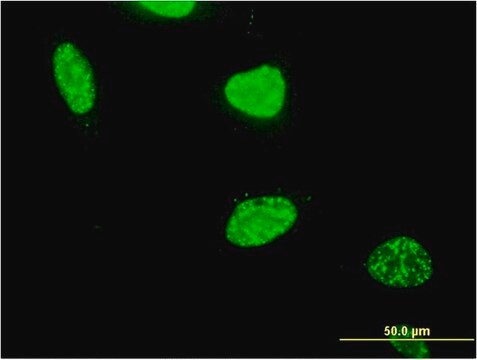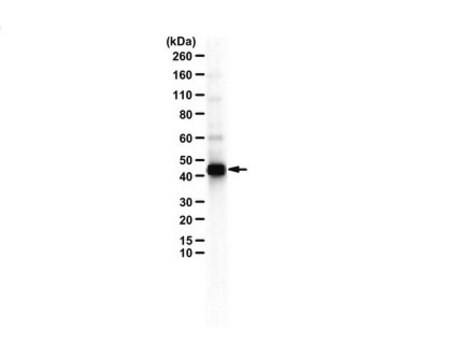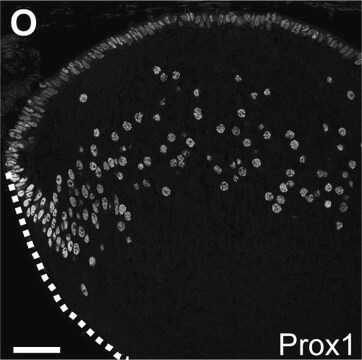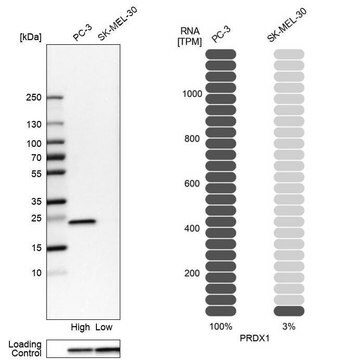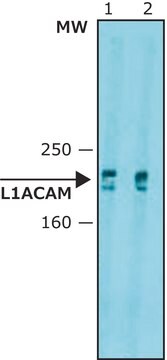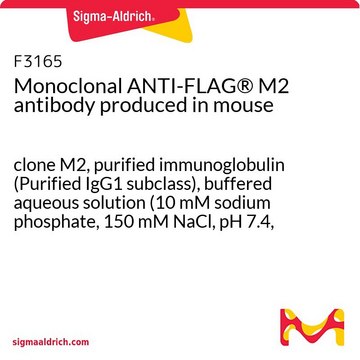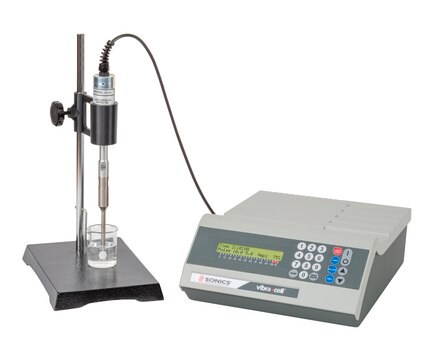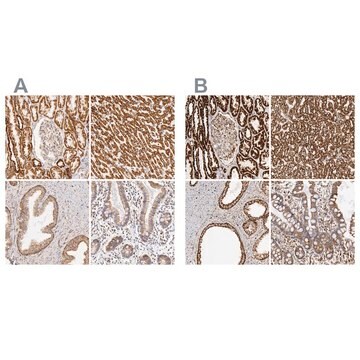ABE1877M
Anti-PAXIP1
from rabbit
Sinónimos:
PAX-interacting protein 1, PAX transactivation activation domain-interacting protein, PAXIP
About This Item
Productos recomendados
origen biológico
rabbit
Nivel de calidad
forma del anticuerpo
affinity isolated antibody
tipo de anticuerpo
primary antibodies
clon
polyclonal
reactividad de especies
human, mouse
envase
antibody small pack of 25 μL
técnicas
ChIP: suitable (ChIP-seq)
immunoprecipitation (IP): suitable
western blot: suitable
isotipo
IgG
Nº de acceso NCBI
Nº de acceso UniProt
modificación del objetivo postraduccional
unmodified
Información sobre el gen
human ... PAXIP1(22976)
mouse ... Paxip1(55982)
Descripción general
Especificidad
Inmunógeno
Aplicación
ChIP-seq Analysis: Analysis: A representative lot detected PAXIP1 in ChIP-seq applications (Callen, E., et. al. (2012). Immunity. 37(6):971-85).
Immunoprecipitation Analysis: A representative lot detected PAXIP1 in Immunoprecipitation applications (Gong, Z., et. al. (2009). J Biol Chem. 284(11):7284-93).
Immunoprecipitation Analysis: 1 µg from a representative lot detected PAXIP1 in nuclear extract of wild type and PTIP KO mouse embryonic fibroblasts (Courtesy of Dr. Ji-Eun Lee and Dr. Kai Ge at NIH).
Western Blotting Analysis: A representative lot detected PAXIP1 in Western Blotting applications (Cho, Y.W., et. al. (2009). Cell Metab. 10(1):27-39; Gong, Z., et. al. (2009). J Biol Chem. 284(11):7284-93).
Epigenetics & Nuclear Function
Calidad
Western Blotting Analysis: A 1:10,000 dilution of this antibody detected recombinant PAX-interacting protein 1.
Descripción de destino
Forma física
Almacenamiento y estabilidad
Otras notas
Cláusula de descargo de responsabilidad
¿No encuentra el producto adecuado?
Pruebe nuestro Herramienta de selección de productos.
Código de clase de almacenamiento
12 - Non Combustible Liquids
Clase de riesgo para el agua (WGK)
WGK 1
Punto de inflamabilidad (°F)
Not applicable
Punto de inflamabilidad (°C)
Not applicable
Certificados de análisis (COA)
Busque Certificados de análisis (COA) introduciendo el número de lote del producto. Los números de lote se encuentran en la etiqueta del producto después de las palabras «Lot» o «Batch»
¿Ya tiene este producto?
Encuentre la documentación para los productos que ha comprado recientemente en la Biblioteca de documentos.
Nuestro equipo de científicos tiene experiencia en todas las áreas de investigación: Ciencias de la vida, Ciencia de los materiales, Síntesis química, Cromatografía, Analítica y muchas otras.
Póngase en contacto con el Servicio técnico